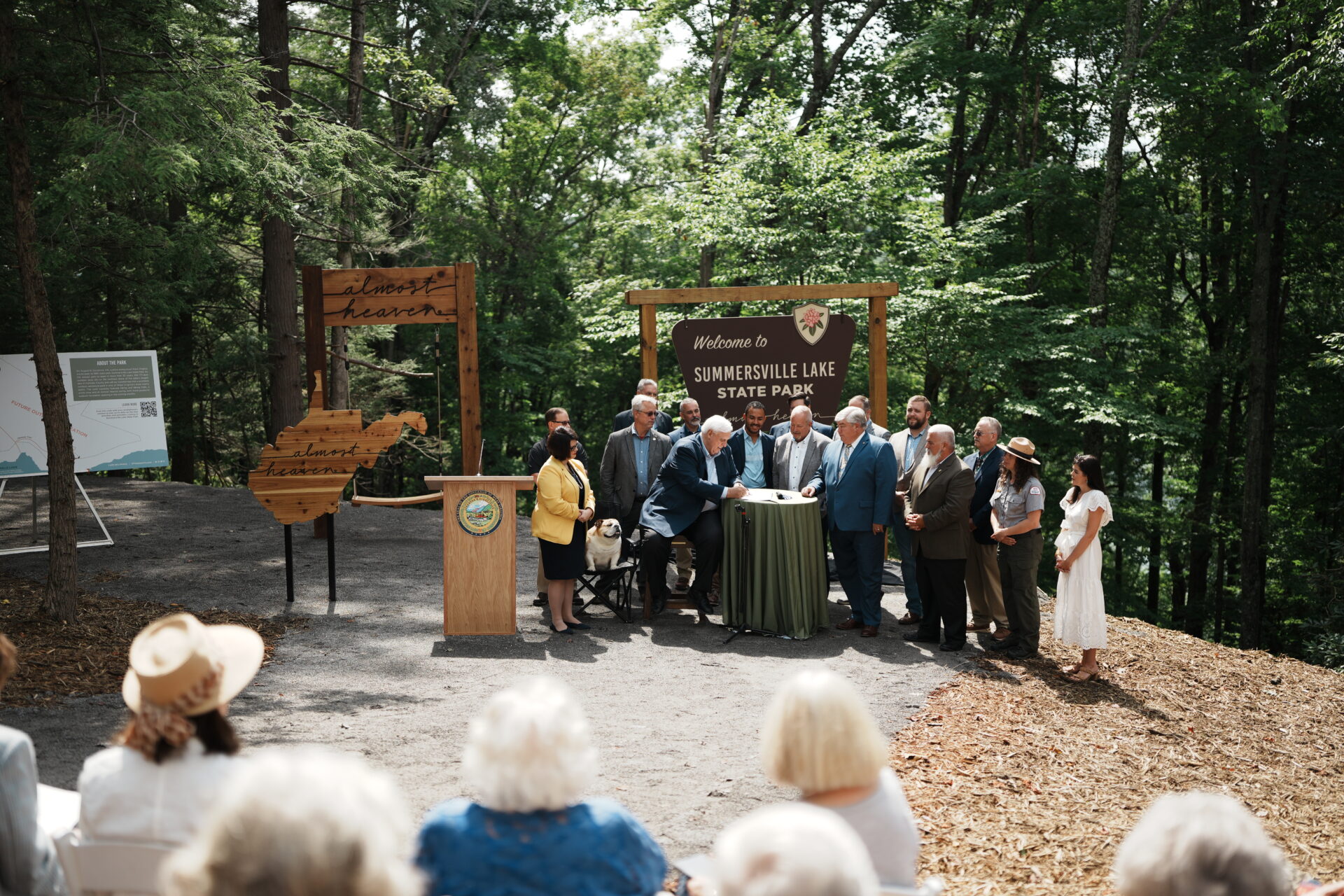For years private concessions like horse stables and zip lines have operated in state parks. Recently passed legislation now allows a third party to be a full partner in overall park concession financing, development and operations.
Department of Natural Resources Director Brett McMillion said Summersville Lake State Park was created and designated to be the target park for this project.
“We have an opportunity to utilize some of those private sector dollars in funding,” McMillion said. “And not be such a strain on our tax dollars and our operating funds.”
McMillion said input from Tuesday’s public meeting on the proposal will be critical to development. He said the goal is creating an outdoor recreation showplace that capitalizes on the unique activities in the Summersville Lake area.
“Summersville Lake is nationally known for its rock climbing, so we’re certainly going to be a listening and willing partner with that side of it,” McMillion said. “We’d like to see camping, unique lodging opportunities, maybe some nearby cabins.”
Other public comments included using green energy and creating safe access to the park from busy Route 19.
The lake shoreline is controlled by the U.S. Army Corps of Engineers. The Corps boundary around the lake does not put any of the 177 park acres to the water’s edge. McMillion said there may be a property leasing agreement down the road.
“That is not uncommon at all with the Corps of Engineers and the DNR,” he said. “So that’s a possibility.”
McMillion said the next steps will be to collect more public comments, comments and create a draft agreement before soliciting proposals from potential vendors. He said he’d like to see some activity on the ground for the next operating season.
“I think it would be possible since we’ll be utilizing some of the private sector’s financing and speed as far as purchasing procurement construction goes,” McMillion said. “We could realize some camping, certainly by next season’s outdoor recreation activities. We may be able to do a prefab visitor center for the interim period until the big one is actually constructed. There’s a strong desire to have a great visitor center right in that area.”
He said there has been a strong push in the park system over the last several years to do as much West Virginia contracting development and employ West Virginia residents as much as they can.
“So, I don’t see any reason this would be any different at all,” McMillion said.
